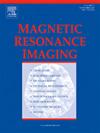Radiomics-based MRI model to predict hypoperfusion in lacunar infarction
IF 2
4区 医学
Q2 RADIOLOGY, NUCLEAR MEDICINE & MEDICAL IMAGING
引用次数: 0
Abstract
Background
Approximately 20–30 % of patients with acute ischemic stroke due to lacunar infarction experience early neurological deterioration (END) within the first three days after onset, leading to disability or more severe sequelae. Hemodynamic perfusion deficits may play a crucial role in END, causing growth in the infarcted area and functional impairments, and even poor long-term prognosis. Therefore, it is vitally important to predict which patients may be at risk of perfusion deficits to initiate treatment and close monitoring early, preparing for potential reperfusion. Our goal is to utilize radiomic features from magnetic resonance imaging (MRI) and machine learning techniques to develop a predictive model for hypoperfusion.
Method
During January 2011 to December 2020, a retrospective collection of 92 patients with lacunar stroke was conducted, who underwent MRI within 48 h, had clinical laboratory values, follow-up prognosis records, and advanced perfusion image to confirm the presence of hypoperfusion. Using the initial MRI of these patients, radiomics features were extracted and selected from Diffusion Weighted Imaging (DWI), Apparent Diffusion Coefficient (ADC), and Fluid Attenuated Inversion Recovery (FLAIR) sequences. The data was divided into an 80 % training set and a 20 % testing set, and a hypoperfusion prediction model was developed using machine learning.
Result
Tthe model trained on DWI + FLAIR sequence showed superior performance with an accuracy of 84.1 %, AUC 0.92, recall 79.5 %, specificity 87.8 %, precision 83.8 %, and F1 score 81.2. Statistically significant clinical factors between patients with and without hypoperfusion included the NIHSS scores and the size of the lacunar infarction. Combining these two features with the top seven weighted radiomics features from DWI + FLAIR sequence, a total of nine features were used to develop a new prediction model through machine learning. This model in test set achieved an accuracy of 88.9 %, AUC 0.91, recall 87.5 %, specificity 90.0 %, precision 87.5 %, and F1 score 87.5.
Conclusion
Utilizing radiomics techniques on DWI and FLAIR sequences from MRI of patients with lacunar stroke, it is possible to predict the presence of hypoperfusion, necessitating close monitoring to prevent the deterioration of clinical symptoms. Incorporating stroke volume and NIHSS scores into the prediction model enhances its performance. Future studies of a larger scale are required to validate these findings.
基于放射组学的MRI模型预测腔隙性梗死的灌注不足。
背景:大约20- 30% %由腔隙性梗死引起的急性缺血性卒中患者在发病后3天内出现早期神经功能恶化(END),导致残疾或更严重的后遗症。血流动力学灌注缺陷可能在END中起关键作用,导致梗死区域生长和功能损害,甚至远期预后不良。因此,预测哪些患者可能存在灌注不足的风险,及早开始治疗并密切监测,为潜在的再灌注做好准备至关重要。我们的目标是利用磁共振成像(MRI)的放射学特征和机器学习技术来开发低灌注的预测模型。方法:2011年1月至2020年12月,回顾性收集腔隙性脑卒中患者92例,在48 h内行MRI检查,有临床实验室值、随访预后记录、晚期灌注影像证实存在灌注不足。利用这些患者的初始MRI,从扩散加权成像(DWI)、表观扩散系数(ADC)和流体衰减反转恢复(FLAIR)序列中提取并选择放射组学特征。将数据分为80 %的训练集和20 %的测试集,并利用机器学习建立低灌注预测模型。结果:DWI + FLAIR序列训练的模型准确率为84.1 %,AUC为0.92,召回率为79.5 %,特异性为87.8 %,精密度为83.8 %,F1评分为81.2。NIHSS评分和腔隙性梗死的大小是有无灌注不足患者之间具有统计学意义的临床因素。将这两个特征与来自DWI + FLAIR序列的前7个加权放射组学特征相结合,共使用9个特征通过机器学习建立新的预测模型。该模型在测试集中的准确率为88.9 %,AUC为0.91,召回率为87.5 %,特异性为90.0 %,精密度为87.5 %,F1得分为87.5。结论:利用放射组学技术对腔隙性卒中患者的MRI DWI和FLAIR序列进行分析,可以预测是否存在灌注不足,需要密切监测,防止临床症状恶化。在预测模型中加入冲程量和NIHSS分数,提高了预测效果。未来需要更大规模的研究来验证这些发现。
本文章由计算机程序翻译,如有差异,请以英文原文为准。
求助全文
约1分钟内获得全文
求助全文
来源期刊

Magnetic resonance imaging
医学-核医学
CiteScore
4.70
自引率
4.00%
发文量
194
审稿时长
83 days
期刊介绍:
Magnetic Resonance Imaging (MRI) is the first international multidisciplinary journal encompassing physical, life, and clinical science investigations as they relate to the development and use of magnetic resonance imaging. MRI is dedicated to both basic research, technological innovation and applications, providing a single forum for communication among radiologists, physicists, chemists, biochemists, biologists, engineers, internists, pathologists, physiologists, computer scientists, and mathematicians.
 求助内容:
求助内容: 应助结果提醒方式:
应助结果提醒方式:


